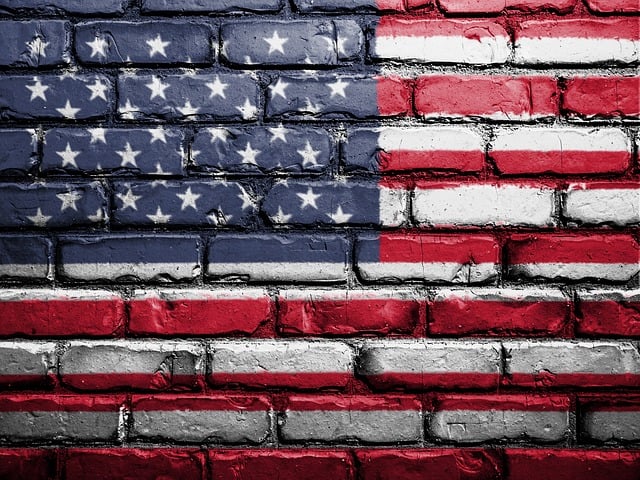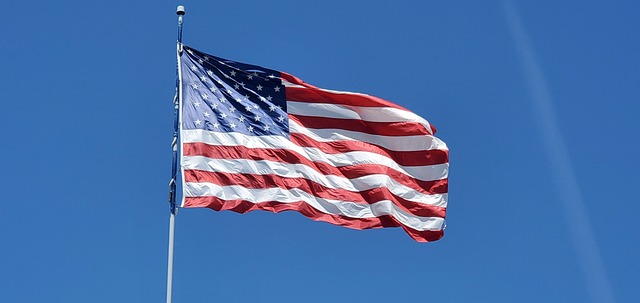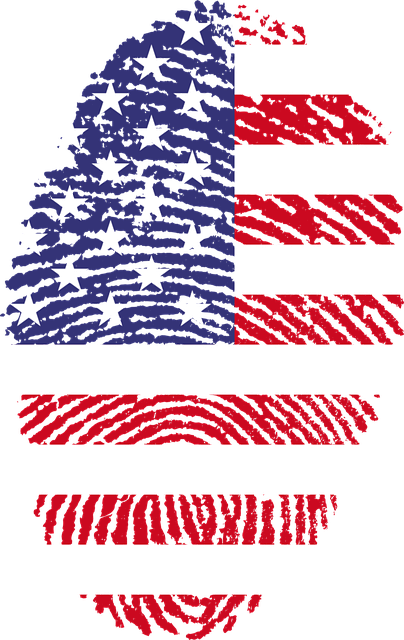The Weathered American Flag holds immense cultural significance as a symbol of the United States' resilience and enduring history. Despite its worn state, marked by the test of time and elements, it stands as a powerful emblem of national heritage, its faded colors and tattered edges imbued with the collective experiences of Americans. Each imperfection on the flag represents an aspect of American heritage and serves as a daily inspiration for citizens to persevere through challenges, reflecting the nation's trials and triumphs. As a heritage piece often passed down through generations, the flag carries forward the legacy of American resilience and the ongoing pursuit of a more perfect union. It is not merely a relic of the past but a living symbol that embodies the strength, unity, and enduring spirit of America, looking toward the future with hope and determination.
The Weathered American Flag stands as a powerful emblem of endurance and unity, its folds telling a story of resilience that transcends time. This article delves into the rich tapestry of American history through the lens of these aged symbols, exploring their evolution and significance in forging our national identity. From the historical context of their design to the personal narratives they carry, we examine how the marks of weathering transform a flag into a living testament to the nation’s journey. Moreover, we explore efforts across America to preserve these vintage flags, ensuring that their stories are honored and shared for generations to come. Join us as we honor the past, engage with the present, and uphold the legacy of the Weathered American Flag.
- The Enduring Legacy of the Weathered American Flag: A Symbol of Resilience and Unity
- Historical Perspectives: The Evolution of the American Flag and Its Role in National Identity
- The Significance of Wear and Tear: How a Weathered Flag Becomes a Testimony to History
- Preserving the Past, Honoring the Present: Restoration and Exhibition of Vintage Flags Across America
The Enduring Legacy of the Weathered American Flag: A Symbol of Resilience and Unity

The weathered American flag, a timeworn emblem weathered by the elements and the passage of time, stands as a powerful testament to the nation’s resilience. This flag, often spotted fluttering atop sturdy poles in public squares or tucked away in personal keepsakes, carries with it the stories of countless Americans who have faced adversity yet endured. Its faded colors and tattered edges do not diminish its significance; rather, they imbue it with a depth of meaning that is amplified by its wear. Each thread and crease represents a chapter of American history, a reminder of the trials and triumphs that have shaped the country’s character. It symbolizes unity amidst diversity, a collective spirit that transcends individual hardships.
In communities across the nation, the weathered American flag is revered not just as a piece of cloth but as a beacon of hope and a harbinger of shared values. It serves as a daily reminder for citizens to remain steadfast in the face of challenges, from natural disasters to societal shifts. Its presence is a call to remember the collective strength that binds the country together, reinforcing the belief that unity is a source of enduring power. The flag, with its indelible marks of history, becomes an heirloom for future generations, passing down the legacy of resilience and the pursuit of a more perfect union. It is a symbol that does not merely reflect a past filled with struggle but also envisions a future where unity and strength continue to prevail.
Historical Perspectives: The Evolution of the American Flag and Its Role in National Identity

The Weathered American Flag, a potent emblem of national pride and resilience, has undergone significant transformations throughout U.S. history, reflecting the nation’s evolving identity. From the original 13 stars and stripes that symbolized independence and unity against British rule, the flag has grown to include 50 stars, each representing one of the fifty states that make up the country today. Each iteration of the flag carries with it the weight of historical events, from the addition of new stars after statehoods were granted, to the alteration of designs in times of peace and war, such as the replacement of green and white stripes with stars and red and white stripes during the War of 1812. The flag has been a silent witness to the nation’s triumphs and tribulations, from the Civil War to the civil rights movement, each weathering of its fabric capturing moments that have shaped the country’s narrative. It is in the worn threads and faded hues that the stories of American resilience are told, a testament to the enduring spirit of the nation it represents. The flag’s evolution mirrors the growth and changes within the society it symbolizes, serving as a tangible reminder of the past and a beacon for future generations.
The Significance of Wear and Tear: How a Weathered Flag Becomes a Testimony to History

The weathered American flag, often displayed on historical buildings or homes across the nation, is a poignant symbol of enduring resilience and a testament to the country’s storied past. Each tear and fray in the stars and stripes tells its own story, one that intertwines with the narrative of the community it represents. Over time, environmental factors such as wind, rain, and sunlight contribute to the flag’s aged appearance. Yet, rather than diminishing its significance, this wear and tear imbues the flag with a profound sense of history. It stands as a reminder that the nation, like the fabric from which the flag is made, has faced challenges, endured hardships, and emerged stronger with each trial. The faded colors and torn seams do not detract from the flag’s power; instead, they enhance its ability to communicate the values it represents: liberty, justice, and the enduring American spirit. Each mark of aging is a chapter in the collective story of America, a narrative that continues to be written with courage, tenacity, and an unwavering commitment to those ideals it embodies. The weathered American flag is not merely a banner; it is a living chronicle of American history, a tangible representation of resilience that continues to inspire new generations.
Preserving the Past, Honoring the Present: Restoration and Exhibition of Vintage Flags Across America

Across the nation, vintage flags, many bearing the weathered and storied marks of time, serve as tangible reminders of American resilience and history. These aged flags, often seen fluttering in the wind on historic battlefields or framed within museum halls, offer a unique window into the past. Their faded colors and worn textiles tell stories of the struggles, triumphs, and everyday life that have collectively shaped America. The preservation of these weathered American flags is not merely a conservation effort but an integral part of American heritage. Restoration experts meticulously treat and reinforce these artifacts, ensuring they retain their integrity while still conveying the passage of time. This process allows future generations to connect with their forebears through these poignant symbols of national identity, fostering a deeper appreciation for both the history they represent and the values they embody.
In addition to preservation, the exhibition of these weathered flags across America plays a pivotal role in honoring the present. These exhibitions are carefully curated to not only display the physical object but also to narrate the stories behind them. They serve as an educational platform, inviting visitors to reflect on the nation’s journey and the resilience it has demonstrated over centuries. Through these displays, visitors can witness firsthand the evolution of the American flag, from its earliest designs to the emblems of today. Each flag is a testament to the enduring spirit of America, a visual chronicle of the events and eras that have molded the country’s character. As such, these exhibitions are not static relics but dynamic elements that continue to engage with contemporary society, fostering a sense of unity and pride in the American experience.
